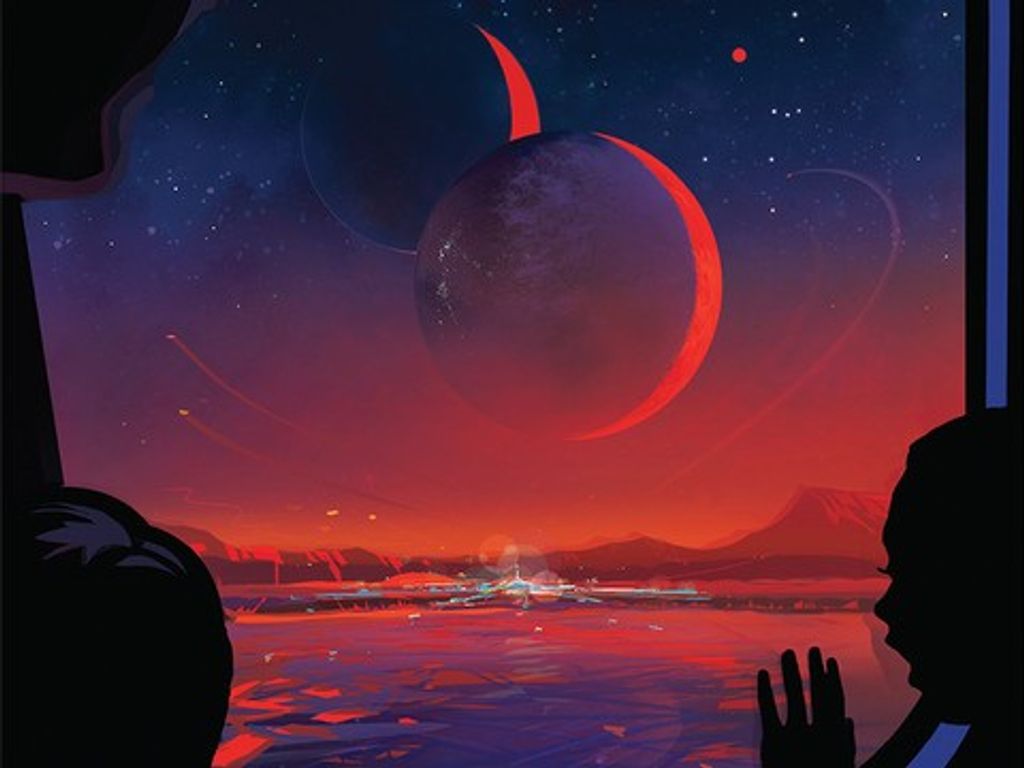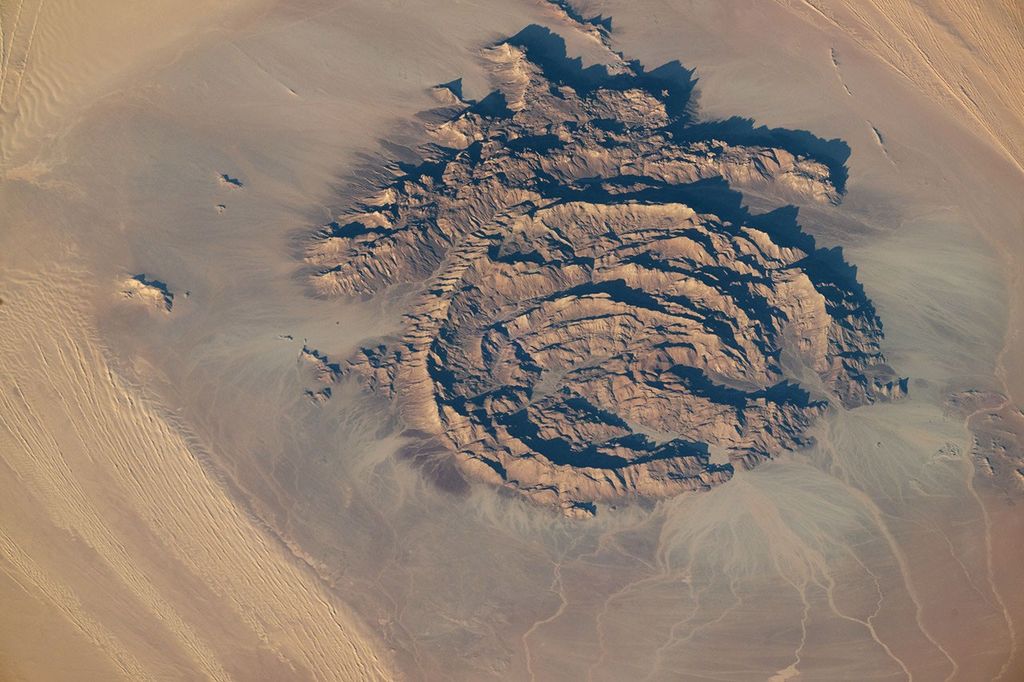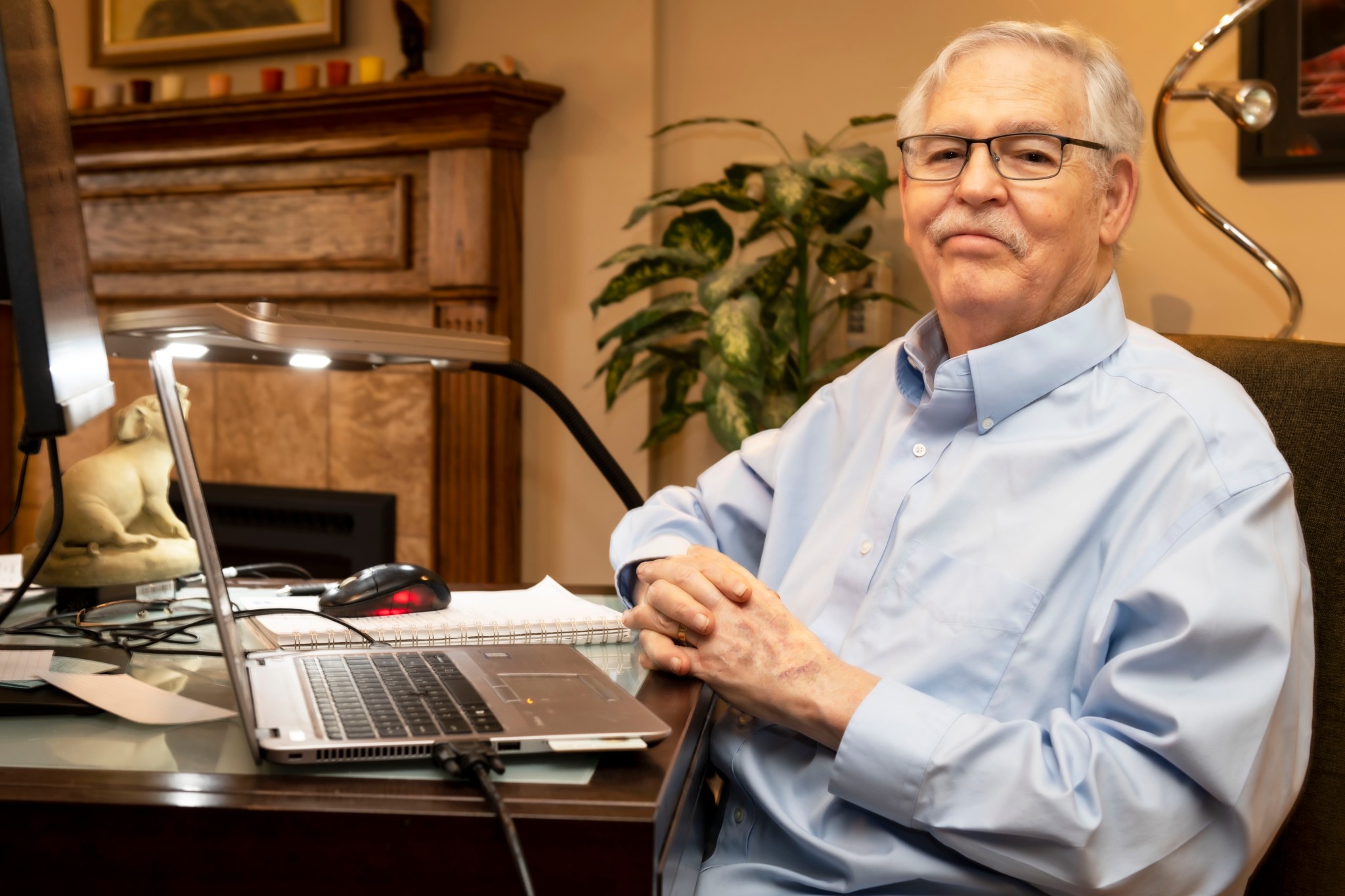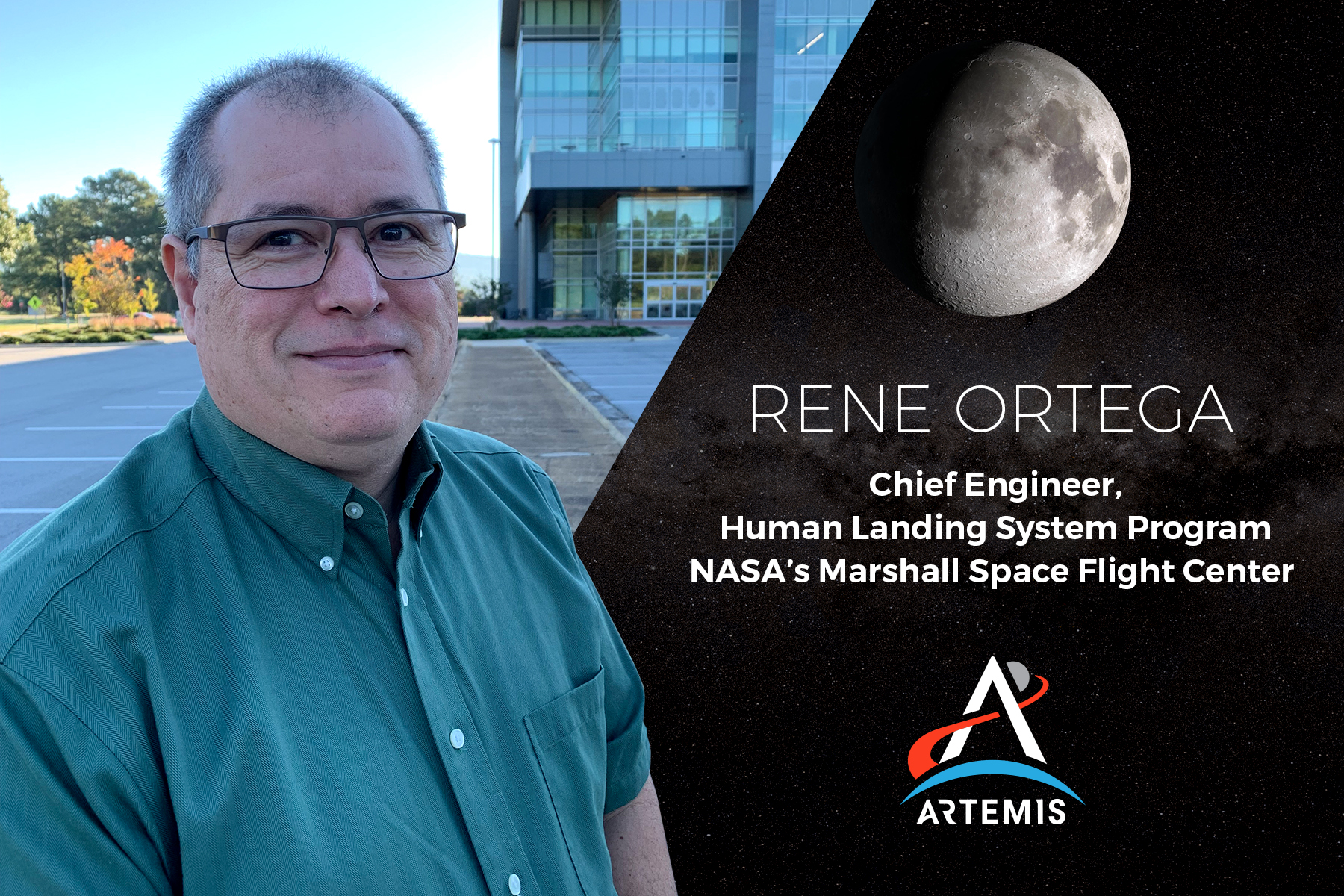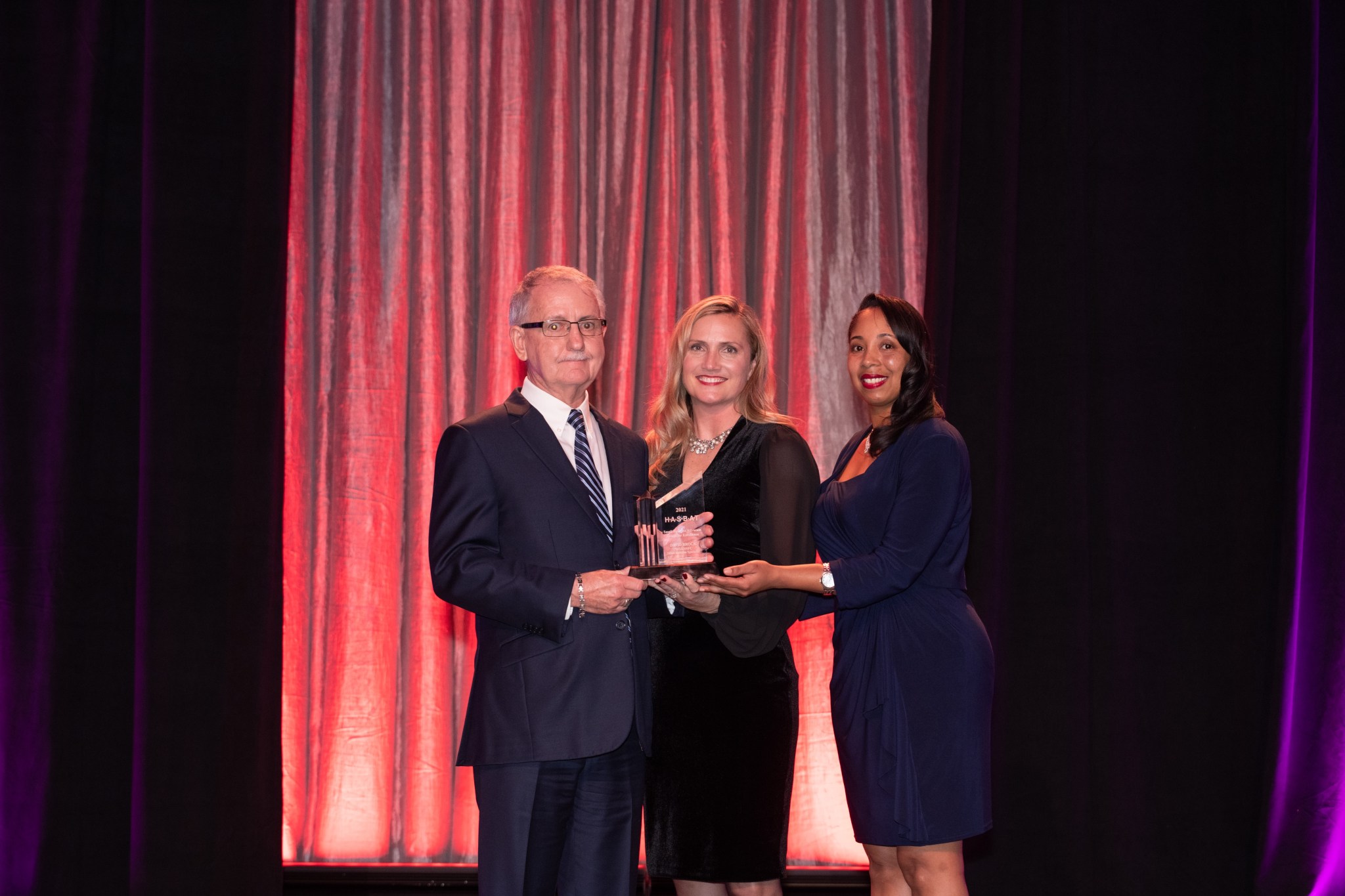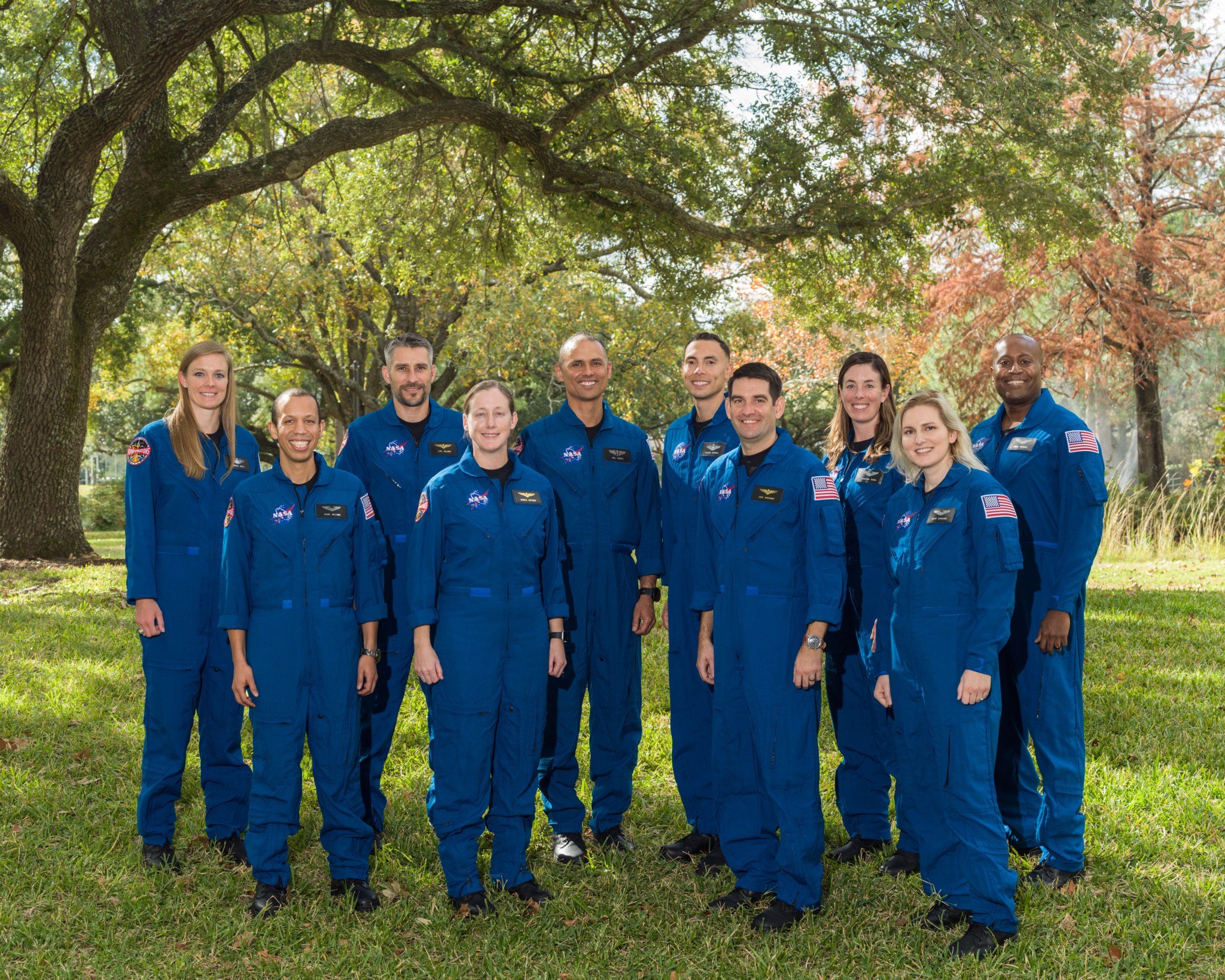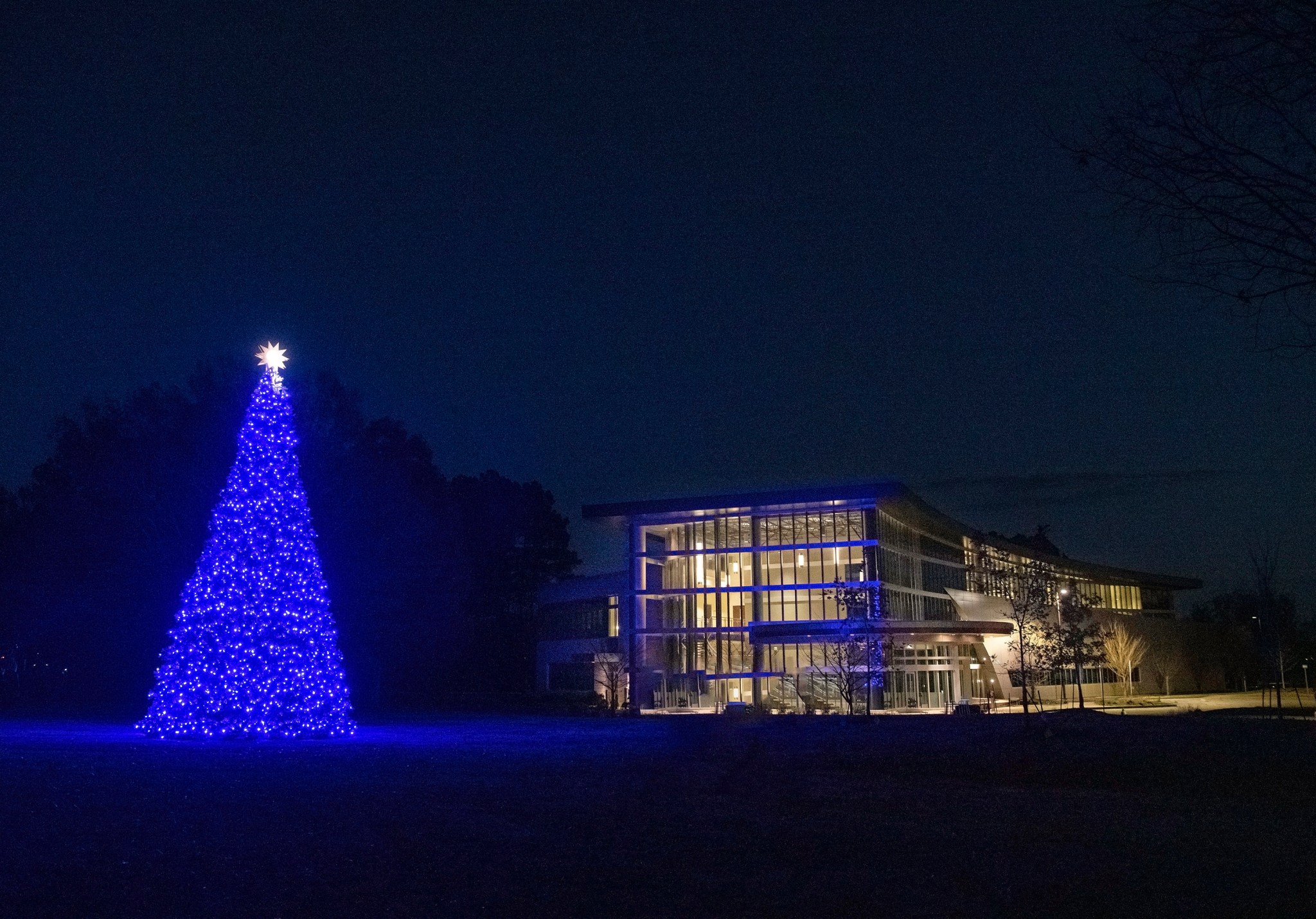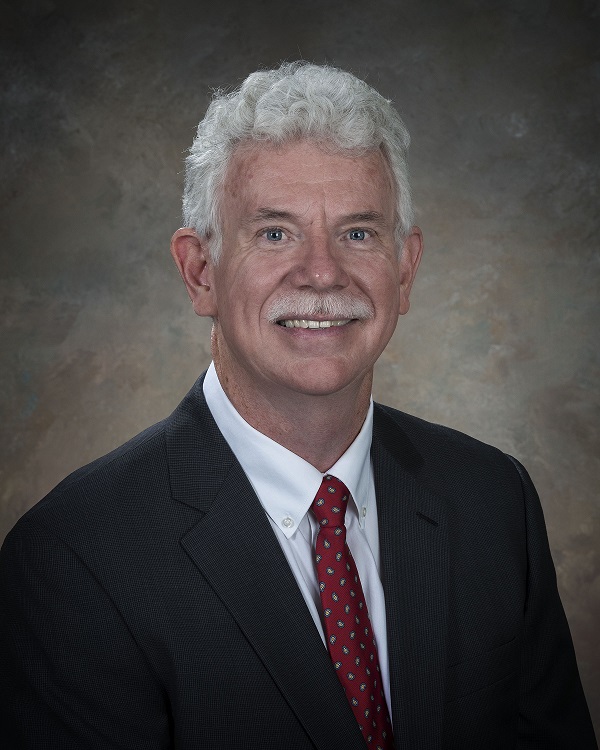Laser Communications Tech Safely in Space
NASA’s Laser Communications Relay Demonstration (LCRD) and a NASA-U.S. Naval Research Laboratory space weather payload to study the Sun’s radiation lifted off at 4:19 a.m. CST on Dec. 7.
The payloads launched aboard the Space Test Program Satellite-6 on a United Launch Alliance Atlas V rocket from Cape Canaveral Space Force Station in Florida as part of the U.S. Space Force’s Space Test Program 3 mission.
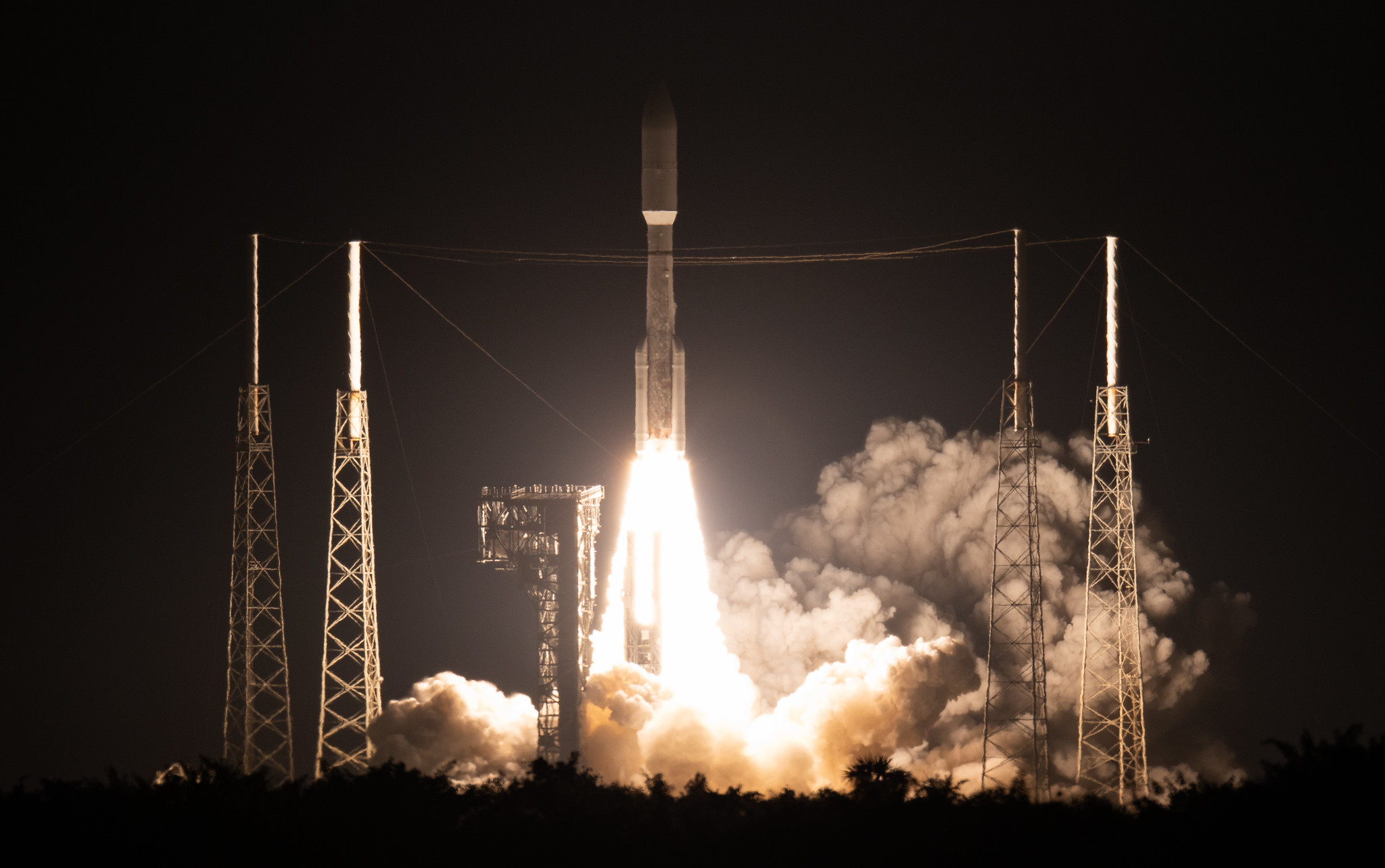
LCRD will demonstrate NASA’s first two-way laser relay communications system, sending and receiving data over invisible infrared lasers, which can enable data rates 10 to 100 times greater than radio frequency systems traditionally used by spacecraft.
“This launch introduces an exciting new technology for space missions,” said Jim Reuter, associate administrator for NASA’s Space Technology Mission Directorate at NASA Headquarters. “Demonstrating this innovative way of communicating with spacecraft will open the door for this technology to expand the horizons of future space missions.”
LCRD will demonstrate the benefits of space-to-ground laser communications, also called optical communications. LCRD will send and receive data at a rate of 1.2 gigabits per second from geosynchronous orbit to Earth. At that speed, a movie could be downloaded in under a minute. Laser communications systems are smaller, lighter, and use less power than radio frequency systems. These advantages, combined with laser communications’ higher bandwidth, can advance robotic and human exploration across the solar system.
“LCRD is NASA’s key milestone for the buildup of the ‘Decade of Light’ initiative, which involves the infusion of optical technology into space communications and navigation,” said Badri Younes, deputy associate administrator for NASA’s Space Communications and Navigation program at NASA Headquarters. “By the 2030s, we expect optical technology to play a critical role in enabling an interoperable, reliable, and robust space communications infrastructure, providing seamless operations and roaming capability between government and commercial users and providers.”
After launch and confirmation that the payload is working well in space, LCRD will begin to transmit and receive data from its location in geosynchronous orbit – about 22,000 miles above Earth – with ground stations in California and Hawaii using infrared lasers.
LCRD will spend two years conducting experiments, assessing how weather and other changes in Earth’s atmosphere can impact laser communications, and measuring link performance to refine its operational capabilities and processes. Some experiments will simulate relay scenarios between the Moon and Earth to inform how laser communications could one day be used in NASA’s Artemis missions. The experiments and simulations will inform the development of future NASA and commercial missions hoping to utilize optical communications in Earth orbit and for exploration of the Moon, Mars, and beyond.
Later in its mission, LCRD will serve as a relay between an optical communications terminal on the International Space Station and ground stations on Earth. NASA’s Integrated LCRD Low-Earth Orbit User Modem and Amplifier Terminal will allow for the first demonstration of a fully operational end-to-end laser communications system from the space station.
LCRD’s mission, vision, design, and development will be covered in depth in the new season of NASA’s The Invisible Network podcast. Over the course of five episodes beginning on Dec. 7 and each Wednesday thereafter, the podcast will highlight the future of the laser communications technologies this mission is proving in space and the people that are making it happen.
LCRD is led by NASA’s Goddard Space Flight Center, in partnership with NASA’s Jet Propulsion Laboratory and the MIT Lincoln Laboratory in Lexington, Massachusetts. LCRD is funded and managed through NASA’s Technology Demonstration Missions program, part of the Space Technology Mission Directorate, and the Space Communications and Navigation program at NASA Headquarters. The Technology Demonstration Missions program is located at NASA’s Marshall Space Flight Center.
The other NASA science payload that launched aboard the satellite was the Ultraviolet Spectro-Coronagraph Pathfinder (UVSC Pathfinder), a joint experiment with the Naval Research Lab that studies the origins of solar energetic particles, the Sun’s most dangerous form of radiation.
UVSC Pathfinder was designed and built at the U.S. Naval Research Laboratory. It was funded through NASA’s Heliophysics Program and the Office of Naval Research. It is managed by the Heliophysics Technology and Instrument Development for Science program office at NASA Headquarters.
Space Test Program is operated by the United States Space Force’s Space Systems Command. STPSat-6 was built by Northrop Grumman.
50 Years of X-ray Vision: Marshall’s Martin Weisskopf Leads NASA’s Next Step in X-ray Astronomy
By Molly Porter and Rick Smith
When NASA’s pioneering Imaging X-ray Polarimetry Explorer mission launches Dec. 9, it will be another career landmark for Dr. Martin Weisskopf, IXPE principal investigator and chief scientist for astronomy at NASA’s Marshall Space Flight Center.
More than three decades ago, Weisskopf led the development and launch of NASA’s Chandra X-ray Observatory as project scientist – a role he continues to fill today. IXPE soon will complement and build upon Chandra’s work, taking a bold and unique step forward by exploring the nature of stars, galaxies, and other celestial bodies in a new way.
But Weisskopf’s fascination with X-rays goes back even further, to his first postgraduate job in 1969, first as a post-doctoral fellow and then as an assistant professor at Columbia University in New York, performing early experiments in X-ray astronomy.
“More than 50 years later, X-ray research remains as compelling to me as ever,” he said.
Launching Chandra in 1999 would be a peak achievement for any scientist, but Weisskopf said shepherding IXPE toward its two-year mission in space has been just as satisfying.
A partnership with the Italian Space Agency, NASA’s newest X-ray collector will measure the polarization of X-rays from some of the most energetic cosmic objects – from the remnants exploded stars to supermassive black holes and their powerful jets of energetic particles – to further understanding of the universe and how it works. Polarization is a property of X-rays and other types of electromagnetic waves. It describes the orientation of the electric parts of the waves as they travel through space. But polarized X-rays are impossible to observe without the right tools.
IXPE is NASA’s first mission to explore the polarization signatures of a variety of X-ray sources. IXPE’s polarization measurements will add new and unique levels of detail to scientists’ understanding of these brilliant and bizarre objects, their surrounding environment, and the natural processes occurring under conditions impossible to recreate in laboratories on Earth.
That suits Weisskopf, who led the development, construction, and testing of both Chandra and IXPE at Marshall.
“Science is a full-contact intellectual sport,” he said. “You’ve got to plan ahead, but also think fast on your feet. I play science like I play basketball – with my elbows, moving you out of position, always looking for unexpected ways forward.”
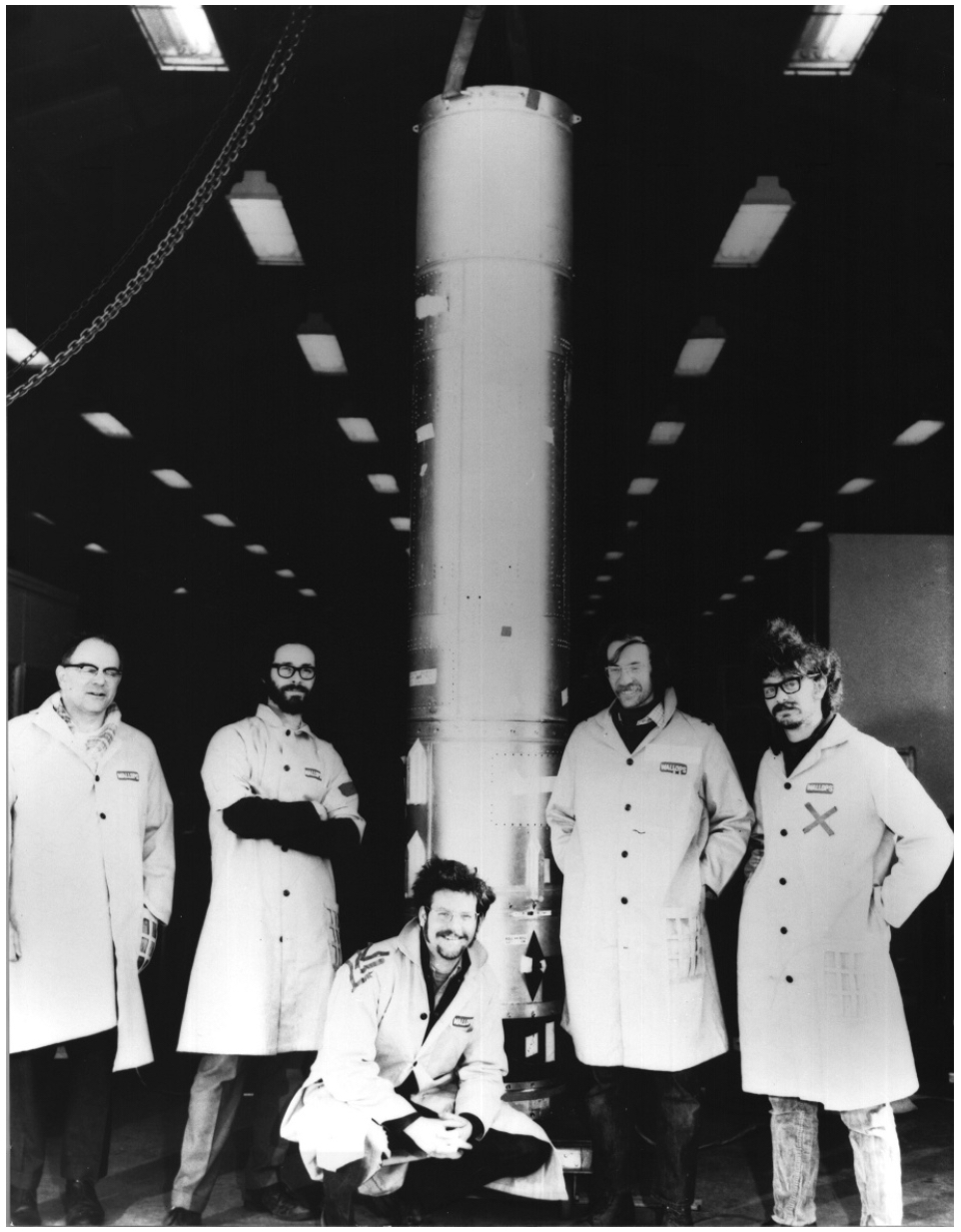
He’s keen, for example, to conduct new observations of supermagnetized stellar remnants called a magnetars. Magnetars are a type of isolated neutron star – the crushed, city-sized remains of an exploded star many times more massive than the Sun. What sets magnetars apart is the enormous storehouse of energy tied up in their magnetic fields, the strongest known in the universe.
“By studying magnetars with IXPE, we can verify the size of those fields, and test how they’re produced by these collapsed stellar bodies,” he said.
Scientists around the world will study IXPE’s findings for decades, Weisskopf noted – but what really thrills him isn’t validating existing models, or concepts.
“What I’d like most are findings that blow our theories out of the water,” Weisskopf said. “Science is most exciting when we find evidence that doesn’t line up, behavior that runs counter to expectations. When we don’t know what the heck is going on, that’s when the fun begins.”
Weisskopf earned a bachelor’s degree with honors in physics from Oberlin College in Ohio in 1964. After receiving his doctorate in physics from Brandeis University in Waltham, Massachusetts, in 1969, he became an assistant professor at Columbia University.
He joined NASA in 1977 as senior X-ray astronomer at Marshall. In addition to his work on Chandra, Weisskopf also launched a major research program in 1978 to develop and refine high-powered X-ray optics, and remains a senior co-investigator for IBIS, the European Space Agency’s international X-ray imager, which has flown on the International Gamma-Ray Astrophysics Laboratory since 2002.
Weisskopf was awarded the NASA Medal for Exceptional Service in 1992 and the NASA Medal for Scientific Achievement in 1999. He received the Hermann Oberth Award from the American Institute of Aeronautics and Astronautics in 2001, the Rossi Prize from the American Astronomical Society in 2004, and the George W. Goddard Award from the International Society for Optical Engineering in 2006.
Weisskopf is also a fellow of the American Physical Society, the International Society for Optical Engineering, and the American Astronomical Society.
Porter is a public affairs officer in Marshall’s Office of Strategic Analysis & Communications. Smith, a Manufacturing Technical Solutions employee, supports the Office of Strategic Analysis & Communications.
SLS Booster Fired up to Test Improved Design for Future Artemis Missions
A team of NASA and Northrop Grumman engineers fired a 2-foot-diameter, subscale solid rocket booster Dec. 2 at NASA’s Marshall Space Flight Center. This test, conducted in Marshall’s East Test Area, was the second of three tests supporting the Booster Obsolescence and Life Extension (BOLE) program, which will have an upgraded design to power the evolved configuration of the Space Launch System (SLS) rocket on flights after Artemis VIII.
The BOLE booster will be a larger and more powerful solid rocket motor than the current SLS solid rocket booster. The boosters for the first eight flights of the Artemis program repurpose the steel booster cases and parts from the Space Shuttle Program with an upgraded design. The BOLE booster will implement a composite case design, replace obsolete parts with newer components, and improve the booster’s design and performance.
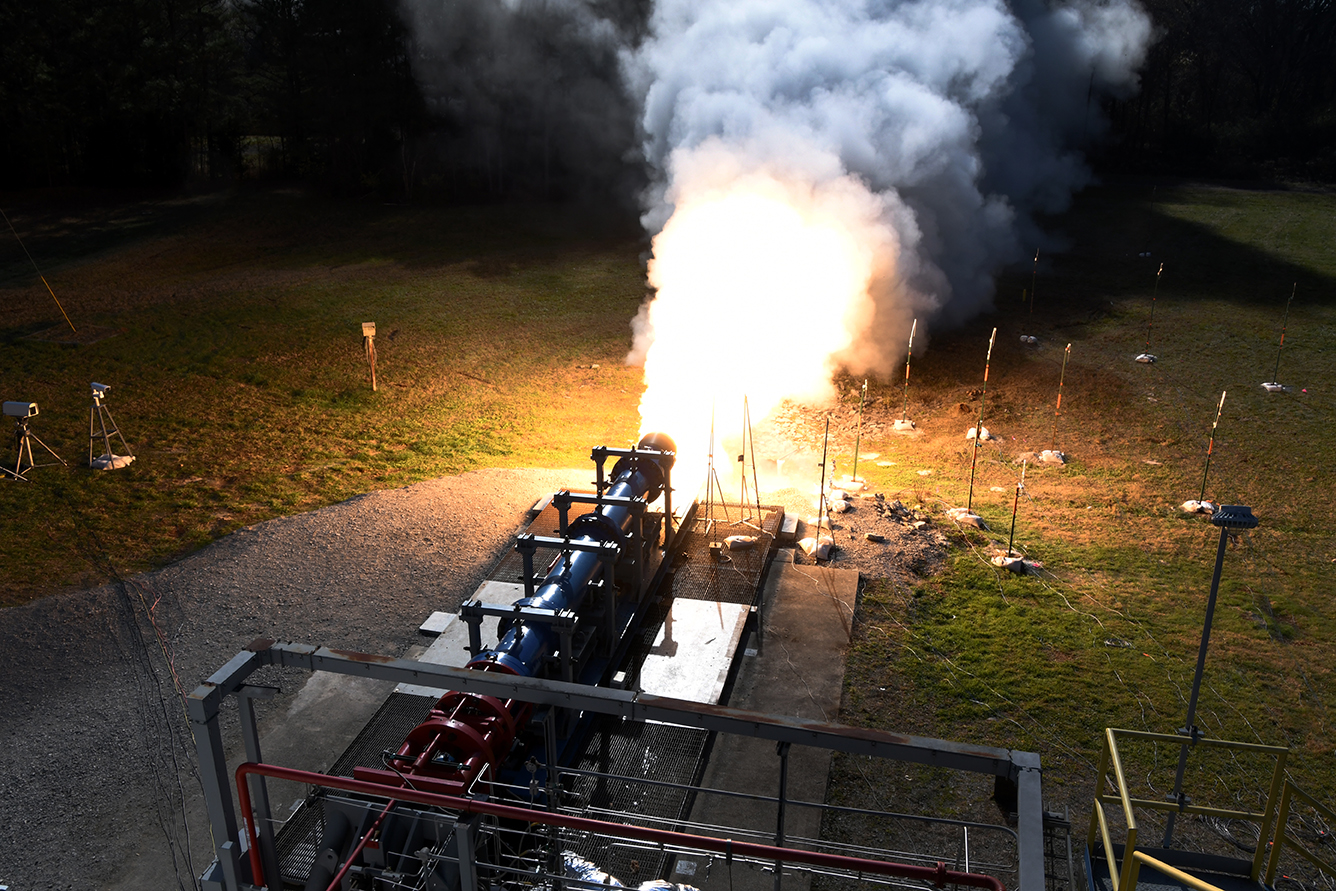
This test focused on the booster motors, which provide the majority of the power to launch SLS. Unlike previous subscale motor tests, this marked the first time the team could evaluate insulation and nozzle on one motor rather than two configurations, one for the nozzle and one for the insulation. During this subscale test, the motor produced 76,400 pounds of thrust.
The original test design had two segments, each 9 feet long. To get a more characteristic thrust profile, a 4 1/2-foot-long segment was added to the test article, totaling nearly 28 feet and making this the longest subscale motor tested to date. In addition to the added half segment, a new propellant, aft dome design, and nozzle design are included in the BOLE motor development program that will become part of the Block 2 evolved rocket.
During the test, three different internal case insulation formulations were evaluated in the aft dome. The performance results of these materials will aid in selecting a final formulation for the first full-scale test fire of the BOLE booster. As the team completes the final design for the full-scale motor, this test is an important step in learning how materials will perform at the higher pressure and performance expected for the BOLE motor as compared to current motors.
The third test of the subscale motor is scheduled for spring 2022 at Marshall, followed by the first full-scale BOLE motor test, tentatively scheduled for spring 2024 at Northrop Grumman’s test facility in Utah. Northrop Grumman, lead contractor for the booster, helped conduct the Marshall test and will be assisting with data evaluation.
I am Artemis: Rene Ortega
Rene Ortega learned resilience early in life, living in Mexico, Ecuador, and Brazil and surviving an earthquake in Nicaragua all before moving to the U.S. the age of 15. A native of Nicaragua, he wasn’t introduced to space exploration until his family settled in South Florida in 1980 during the early Space Shuttle Program.
“I still have the vivid memory of watching STS-1 astronauts John Young and Bob Crippen on TV during physics class in April of 1981,” Ortega said.
The early and impactful exposure to space inspired him to take on the challenge of studying both civil and architectural engineering during his undergraduate years at the University of Miami. Ortega signed up for the opportunity to interview with NASA when the agency came to campus during his senior year.
Ortega’s early inspiration came full circle with a resulting job offer to support the Space Shuttle Program at NASA’s Marshall Space Flight Center. Over the next 34 years, he continued to work in various engineering roles at Marshall, including chief engineer for both the Space Shuttle Program and the Space Launch System program.
In 2019, Ortega was named chief engineer of the Human Landing System (HLS) program when the office was created at Marshall as part of the Artemis program. The HLS program has a broad scope of responsibility, including launching the lander from Earth, preparing the lander for crew arrival in lunar orbit, conducting a safe landing on the lunar surface, ascending from the lunar surface to return the crew back to their staging vehicle for their safe return to Earth, and finally disposing or reuse of the lander.
Ortega is responsible for ensuring the engineering design processes, specifications, rules, and best practices are followed to produce a human landing system that can safely and successfully accomplish each of these mission phases. Ortega is also the HLS program’s engineering technical authority during the many reviews and assessments throughout the development phase, leading up to flight and landing of the HLS.
Ortega’s ability to adapt to challenges and his commitment to NASA have empowered him to support the HLS program in vital ways. His work will contribute to building innovative human landing systems that will transform space travel and be a mark in space exploration.
“Being part of the team that will return Americans to the Moon after more than 50 years is really exciting and an honor,” he said.
David Brock Receives Small Business Advocate Award
David Brock of NASA’s Marshall Space Flight Center receives the Huntsville Association of Small Businesses in Advanced Technology’s Small Business Advocate Award for Excellence at the Huntsville/Madison County Chamber of Commerce Small Business Awards Celebration on Dec. 1. Brock is NASA’s Mentor-Protégé Program manager and a Marshall small business specialist. He works closely with large prime contractors and small businesses to help forge relationships designed to grow capabilities. He has been actively involved in NASA’s small business program for more than 36 years, receiving numerous awards during his career. Brock is proactively supporting legislation promoting small businesses and the executive order on advancing racial equity and support for underserved communities through the federal government. Jami Peyton, CEO of Canvas Inc. and the chamber’s vice chair of Small Business & Events, center, and Allison Rhen, HASBAT president and executive vice president of MJLM Engineering, presented the award to Brock. (Huntsville/Madison County Chamber)
NASA Selects New Astronaut Recruits to Train for Future Missions
NASA has chosen 10 new astronaut candidates from a field of more than 12,000 applicants to represent the United States and work for humanity’s benefit in space.
NASA Administrator Sen. Bill Nelson introduced the members of the 2021 astronaut class, the first new class in four years, during a Dec. 6 event at Ellington Field near NASA’s Johnson Space Center.
“Today we welcome 10 new explorers, 10 members of the Artemis Generation, NASA’s 2021 astronaut candidate class,” Nelson said. “Alone, each candidate has ‘the right stuff,’ but together they represent the creed of our country: E pluribus unum – out of many, one.”
The astronaut candidates will report for duty at Johnson in January 2022 to begin two years of training. Astronaut candidate training falls into five major categories: operating and maintaining the International Space Station‘s complex systems, training for spacewalks, developing complex robotics skills, safely operating a T-38 training jet, and Russian language skills.
Upon completion, they could be assigned to missions that involve performing research aboard the space station, launching from American soil on spacecraft built by commercial companies, as well as deep space missions to destinations including the Moon on NASA’s Orion spacecraft and Space Launch System rocket.
“Each of you has amazing backgrounds,” Pam Melroy, former NASA astronaut and NASA’s deputy administrator, told the candidates. “You bring diversity in so many forms to our astronaut corps and you stepped up to one of the highest and most exciting forms of public service.”
Applicants included U.S. citizens from all 50 states, the District of Columbia, and U.S. territories Puerto Rico, Guam, the Virgin Islands, and Northern Mariana Islands. For the first time ever, NASA required candidates to hold a master’s degree in a science, technology, engineering, or math field and used an online assessment tool. The women and men selected for the new astronaut class represent the diversity of America and the career paths that can lead to a place in America’s astronaut corps.
With the addition of these 10 members of the 2021 astronaut candidate class, NASA now has selected 360 astronauts since the original Mercury Seven in 1959.
The 2021 astronaut candidates are:
- Nichole Ayers, 32, a major in the Air Force and a native of Colorado. In 2019, she led the first all-woman formation of the F-22 in combat.
- Marcos Berríos, 37, a major in the Air Force who grew up in Guaynabo, Puerto Rico. He has accumulated more than 110 combat missions and 1,300 hours of flight time in more than 21 different aircraft.
- Christina Birch, 35, a former professor of bioengineering, and scientific writing and communication, from Gilbert, Arizona. She is a decorated track cyclist on the U.S. National Team.
- Deniz Burnham, 36, a lieutenant in the Navy and resident of Wasilla, Alaska. She is an experienced leader in the energy industry, managing on-site drilling projects throughout North America.
- Luke Delaney, 42, a retired major in the Marine Corps who grew up in Debary, Florida. He most recently worked as a research pilot at NASA’s Langley Research Center, where he supported airborne science missions.
- Andre Douglas, 35, a Virginia native who most recently was a senior staff member at the Johns Hopkins University Applied Physics Lab. He previously served in the Coast Guard.
- Jack Hathaway, 39, a commander in the Navy and a native of Connecticut. He has more than 2,500 flight hours in 30 types of aircraft, more than 500 carrier arrested landings, and flew 39 combat missions.
- Anil Menon, 45, a lieutenant colonel in the Air Force who was born and raised in Minneapolis, Minnesota. He is an actively practicing emergency medicine physician who has been a flight surgeon for SpaceX and NASA.
- Christopher Williams, 38, a medical physicist who grew up in Potomac, Maryland. He most recently worked in the Radiation Oncology Department at the Brigham and Women’s Hospital and Dana-Farber Cancer Institute in Boston.
- Jessica Wittner, 38, A lieutenant commander in the Navy and a native of California. She has a distinguished career as a naval aviator and test pilot, and served operationally flying F/A-18 fighter jets.
Find photos and additional information about the new astronaut candidates here.
Marshall Leadership Gathers to Celebrate Annual Tree Lighting
By Tee Quillin
Leadership of NASA’s Marshall Space Flight Center gathered Dec. 1 for the annual lighting of the holiday tree, and recorded the event so the workforce could join in the celebration virtually.
This year, there were several notable changes from past tree lightings, including a solid blue lighting color and new location – just north of Building 4260. The traditional location was unavailable this year due to construction around Building 4200.
“This is one of my most favorite times of the year,” Marshall Director Jody Singer said. “We just wanted to do this tradition because we want to celebrate all the hard work, and how much we appreciate how much you’ve been doing this year.”
Singer was joined by Marshall Deputy Director Rick Burt, Associate Director Steve Miley, and Associate Director, Technical, Larry Leopard. Also making an appearance was Special Limited Envoy for International Goodies Handling (SLEIGH) specialist Santa Claus, who joined the group for the countdown to the tree lighting and asked them to tell him their holiday wishes.
“It’s the season to celebrate our loved ones – family and friends – and of course our Marshall family,” Burt said. “2021 has been a challenging year, and we are so grateful from the bottom of our hearts to each one of you.”
“We are reaching a lot of milestones,” said events coordinator Linda Southworth, who helped plan and oversee the event. “We are about to launch NASA’s Space Launch System and IXPE, and there are numerous accomplishments happening at other centers. We are coming together as one NASA, and it just seemed fitting to do a NASA-blue tree.”
The other new addition is the tree-topper designed and constructed by Aaron Stanfield, a Marshall exhibits technician and model-maker. The topper, manufactured on-site at the Marshall Model Shop, is a 3D NASA logo backed by a 10-pointed star, with each point representing a NASA center. It sits atop a 32-foot-tall artificial tree.
The tree will remain on display until after the new year and can be viewed from Rideout Road.
Quillin, a Media Fusion employee, Supports Marshall’s Office of Strategic Analysis & Communications.
Happy Holidays, Marshall Family!
As we come to the close of 2021, I want to express my appreciation to and for all of you, for the work that you do, and for all the ways that you contribute to Marshall being such a great place to work. One very important aspect of all that is your willingness, desire, and dedication to watching out for each other and helping each other. This is something that sets us apart and makes our teams more like work families, rather than just groups of people who happen to work together. Thank you! It is a pleasure and an honor to work with you.
Although much better in many ways than 2020, this year has brought us many challenges. It’s important for us to keep in mind that even when things aren’t going as well as we would like, there are still many, many good things in our lives. I want to encourage you to join me in pausing and thinking about the good things in life. These people, things, events, and/or circumstances might be relatively constant in our lives, or they may be fleeting, but what’s important is that they’re positive and important to us in some way. Make a list of several of them and then add a few to your list each day. It’s nice to see how the list grows so long, so quickly. I call this activity “practicing gratitude,” and it’s a great way to maintain some perspective and to not become overwhelmed with the negativity that sometimes surrounds us in the larger society.
I also want to encourage you to take good care of yourselves throughout the holiday season. It’s a time of joy and excitement, but can also be a time of stress and sadness for many. Please stay engaged with your loved ones and other support systems, and reach out to others and be a source of support for them, too.
I’m keeping it short today, so I’ll close where I started: Happy Holidays!
Be kind, be safe, and be well!
Dr. Terry Sterry
Licensed psychologist and Marshall Employee Assistance Program coordinator
For more information, visit the Employee Assistance Program page on Inside Marshall. For more information on NASA’s coronavirus response and teleworking, visit NASAPeople.
Agency Leadership’s Visit to Marshall Highlighted on ‘This Week at NASA’
A visit by NASA leadership to the agency’s Marshall Space Flight Center is featured in “This Week @NASA,” a weekly video program broadcast on NASA-TV and posted online.
NASA Administrator Sen. Bill Nelson and Deputy Administrator Pam Melroy visited Marshall on Nov. 29 and 30 for a first-hand look at the center’s vital work to advance the deep space exploration endeavors of the Artemis program. Marshall manages the agency’s Space Launch System (SLS) rocket, which will power the next generation of exploration under Artemis, including uncrewed and crewed flight tests around the Moon that will pave the way for more complex missions to send astronauts to the Moon, in preparation for eventual human missions to Mars.
View this and previous episodes at “This Week @NASA” on NASA’s YouTube page.














